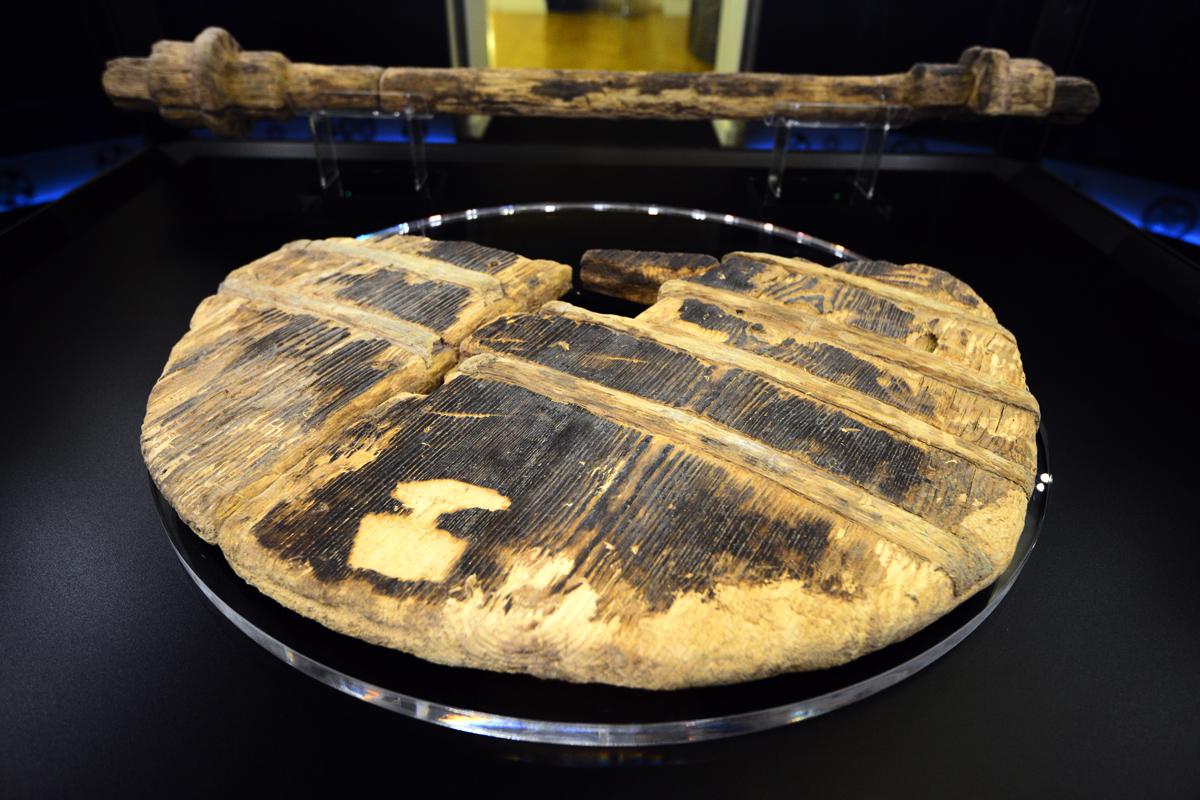
In 2002, a team of experts, under the guidance of Anton Velušček, was working on an archeological site on the Ljubljana Marshes, not far from the town of Vrhnika. The team had already discovered two prehistoric wooden boats in a drainage ditch when one of the members of the expedition, archeologist Janez Dirjec, stumbled upon an odd-looking piece of wood.
What had at first looked like an ordinary plank turned out to be a remarkable find -- it was an ancient wheel. Further excavations revealed an axle buried not far away.
Radio carbon dating proved what some scientists had already suspected: It was 5.200 years old, the same age as a nearby settlement of stilt houses named Stare Gmajne. In prehistoric times, the area was covered in deep marshes, and communities built on stilts flourished in the area.
But what scientists hadn’t known is what the residents of those settlements used for transportation. The shape of the wheel and the axle indicated that the objects were made for a two-wheeled cart, a design that later became common in the Alps. The people of the area used the carts, probably driven by cattle, to transverse great distances. Indeed, other objects found at the Ljubljana Marshes suggest that they used roads to travel in an area between the Alps and the southern Balkans – centuries before the Romans built their own roads.
The wheel turned out to be the oldest wooden wheel in the world. It only survived because it was preserved in the moist soil layers of the Ljubljana Marshes and then quickly transported to Germany for expert treatment that prevented it from falling apart when it dried out. In addition to its age, the wheel is also remarkable for the quality of its workmanship. The way it was put together indicates that its makers possessed far greater skills and knew more about the properties of wood than scientists have imagined – again challenging many preconceptions.
Despite it seeming simplicity, the wheel turned out to be an invaluable artifact that shed light one of Europe’s earliest civilizations, a culture with an important presence on the territory of modern-day Slovenia. The clues that this and other objects from the Ljubljana Marshes provided about Europe’s past led UNESCO to add the area in their prestigious World Heritage list in 2011.


































































